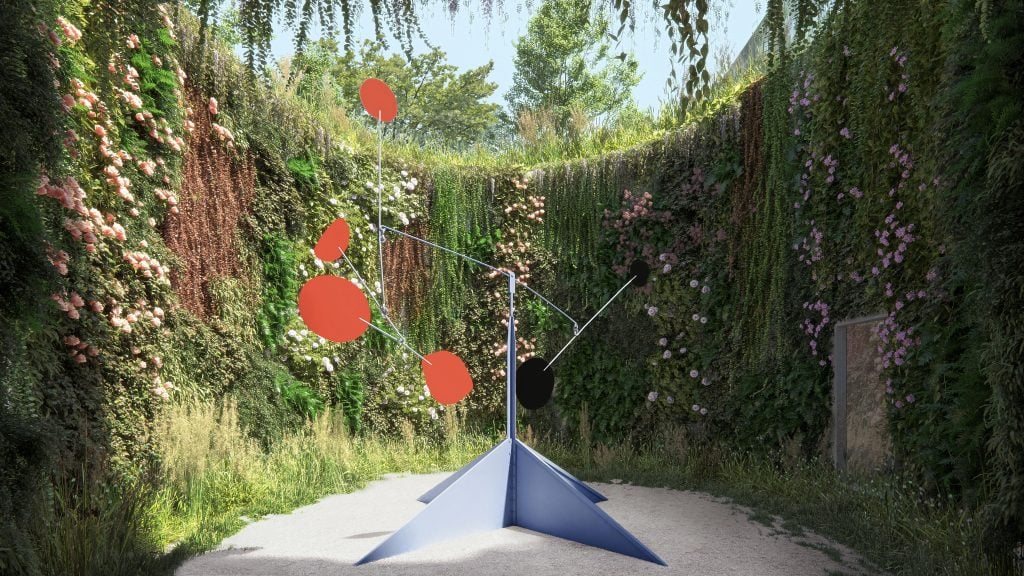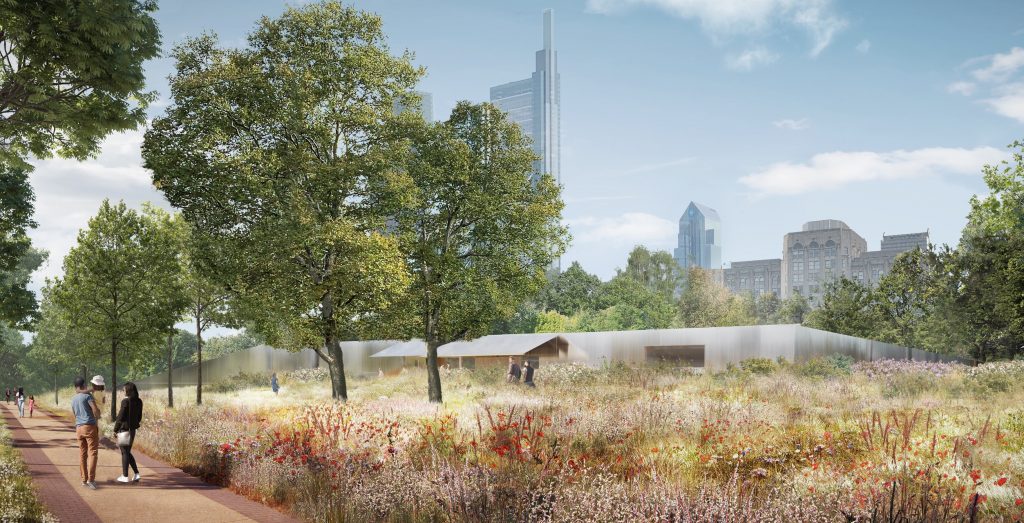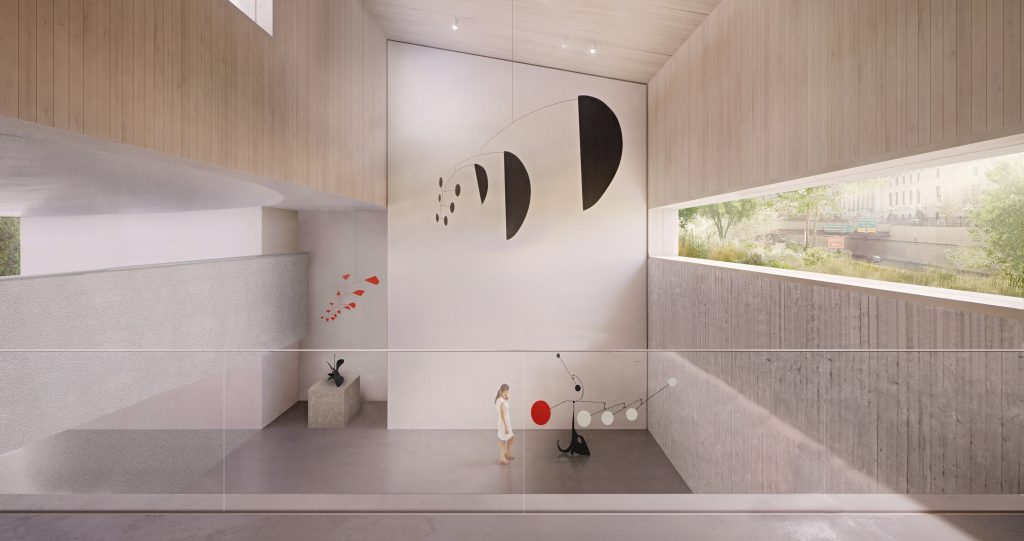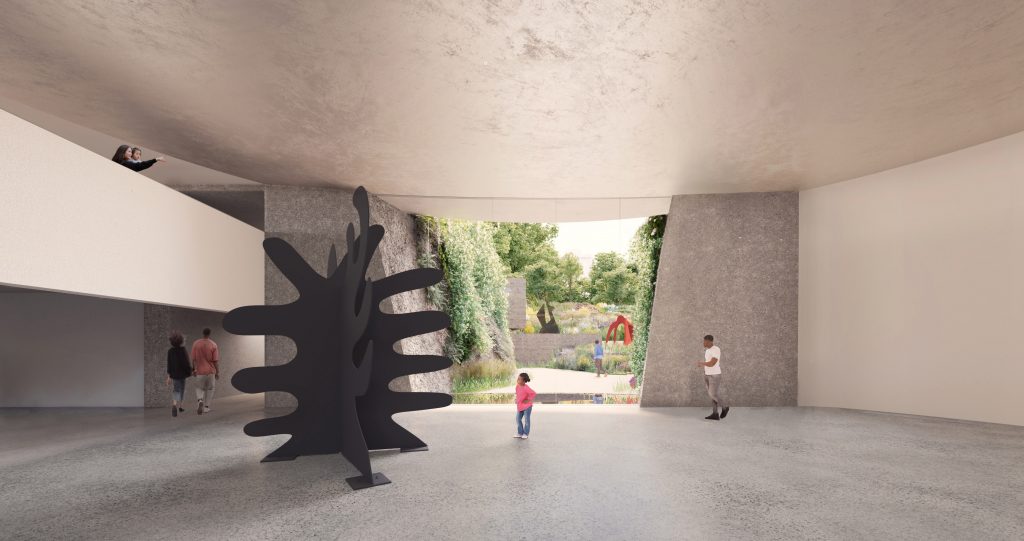Art World
Famed Architects Herzog & de Meuron Have Built a New Garden Dedicated to Alexander Calder’s Art in Philadelphia—See Images Here
The plan comes 13 years after the removal of Philadelphia's Calder sculpture garden.

The plan comes 13 years after the removal of Philadelphia's Calder sculpture garden.

Vittoria Benzine

Designs for a forthcoming garden in Philadelphia dedicated to work by the late Modernist American sculpture Alexander Calder have been released by the artist’s foundation.
The plan, designed by Pritzker Prize-winning architecture firm Herzog and de Meuron, comes 13 years after the city’s Calder Sculpture Garden was dismantled, and two years after the Calder Foundation announced the project, with funding from the Neubauer Family Foundation, the Pew Charitable Trusts, H.F. Lenfest, and an anonymous donor.
Herzog and de Meuron are planning an 18,000-square-foot structure to be sheathed in reflective metal sinking into a 1.8 acre site not far from the Barnes Foundation and Rodin the Museum.
In conversation with Artnet News, Calder Foundation founder and the artist’s grandson, Alexander S.C. Rower, called the gilded Rodin Museum “exactly what I don’t want to make.”
“Calder was a great disruptor,” Rower said. “There’s no retrospective art installation. My truest desire is that people get to know themselves better, not get to know Calder’s work better.”

Calder Gardens, Parkway Garden. © Herzog & de Meuron
Inside and out, the grounds will host rotating selections from the Calder Foundation’s collection, including mobiles, stabiles, monumental sculptures, and paintings.
A meadow-lined path will guide viewers from the hectic cityscape to the serene main entrance. Inside, cascading spaces start with a subterranean gallery that opens to a double-height, chapel-like space dedicated to a regularly changing presentation of Calder’s most acclaimed works.
Unexpected nooks will allow visitors to discover new hidden sculptures on repeat visits.
“Form, color, movement are the most obvious of many outstanding aspects in Calder’s Art,” architect Jacques Herzog said a statement. “We wanted to therefore avoid rather than adopt the use of those as possible design elements.”
The site near a busy interstate, Rower said, was addressed directly by the design team.
“Jacques responded immediately to this, as opposed to some architects who’d try and hide that,” Rower, calling the architecture “very pure. But I definitely wouldn’t call it minimal.”

Highway and Tall Gallery. © Herzog & de Meuron. All artworks by Alexander Calder © 2022 Calder Foundation, New York / Artists Rights Society (ARS), New York
The site will also feature sunken and rock gardens, each with their own artworks.
The Calder Gardens team has also recruited renowned horticulturalist Piet Oudolf to plan the gardens.
“I see my gardens as living sculptures where change is constant,” Oudolf said. “My hope is that people will take the time to stand still and think here, to fully experience these elements together and have an emotional reaction.”
Rower anticipates an olfactory element from the flowers, with a focus on native plant species. Oudolf will start work after construction is completed.

Open Plan Gallery © Herzog & de Meuron All artworks by Alexander Calder © 2022 Calder Foundation, New York / Artists Rights Society (ARS), New York
When Rower started the foundation in 1987, he wanted it to function like an intellectual repository. That mission has since expanded to sharing Calder’s work with the public.
Two years ago, Rower started thinking even bigger, entreating the organization’s board to include topical matters like ecology in their mission. Just last month, Rower hosted an ecologist at his grandfather’s permanent home and studio on a farm in Connecticut.
The two discussed plans to encourage biodiversity and have stopped mowing principal lawns to support bee populations.
The Calder Gardens similarly promises to break from the parkway’s many manicured lawns, inspiring other institutions to work with the environment rather than against it.
Permits have already been issued, and construction tents have already started popping up. For the time being, Calder Gardens is tentatively scheduled to open in winter 2024.